

Best Israeli Writers to Read for Hebrew Beginners

- Posted by Yoel Ganor
- Categories Articles
- Date May 16, 2021
Reading books is an enriching experience; it can transport you to a new place and help you live a reality you would never have imagined on your own.
But before you choose your next novel to read, might we suggest reading one in Hebrew? Not only will doing so help brush up your skills, but you will also be delving deep into Israeli literature. Here are our favorite Israeli authors, whose books are suitable for readers of all levels!
Etgar Kerett
If you’re just starting off with reading Hebrew books, we recommend investing in some short stories. It’s less commitment and a faster read, and can help you learn the language more effectively. One of our favorite short-fiction writers is Israeli author Etgar Kerett.
Not only does Kerett write strikingly fascinating short fiction novels, but he also dabbles in the world of graphic novels. Fou De Cirque is one of many whimsical and visual stories he has written, which showcases fun stories with colorful imagery. It’s ideal for readers who understand Hebrew but would also enjoy the drawings to help guide the story!
A. B. Yehoshua
Short and whimsical stories aren’t everyone’s cup of tea, and for more serious readers who enjoy a bit of drama and mystery, we recommend the work of A. B Yehoshua. Known best for his New York Times bestseller , A Woman in Jerusalem, Yehoshua’s gripping story is an absolute must-read!
Exploring themes of love, humanity, and individuality, Yehoshua will not only help you strengthen your Hebrew, but also your outlook on life. His work continually revolves around human nature and coping with hardships. Dubbed the ‘Israeli Faulkner,’ his work needs to be explored by every avid reader.
If you want to move away from pure fiction and read stories based on reality, then Amos Oz is the go-to author! His poignant memoir, A tale of love and darkness, became an overnight sensation, with millions of books sold and even bootleg versions made !
The memoir explores Oz’s life growing up after the death of his mother and his experiences in the time of the War of Independence. It gives us a very personal look into the life of a young boy in a changing world. Known as the most significant selling literary work in Israel, it would be a shame to pass up on such an excellent piece of work! Want to read these books in their original language? Then brush up your skills with us at Ulpan Or. You can now Learn Hebrew Online with native teachers and explore the fantastic literary work published in Israel. Contact us today for more information on our Hebrew online lessons
Tag: A. B. Yehoshua , Amos Oz , Etgar Kerett , Israeli Writers , Hebrew Beginners
Previous post
3 Upcoming Holidays In Israel And What They Mean
Is hebrew difficult to learn for english speakers, you may also like.

The History of Hummus, a Middle Eastern Staple

The Important Social Benefits of Learning a Second Language

Surprising Facts About Israel That You Didn’t Know
Login with your site account.
Email Address
Remember Me
'The Hebrew Teacher': Three novellas about Israeli women in the US - review
Each story is a slice of life of an israeli woman whose reality was altered by immigration to the united states..

The stories of Israeli women in the US
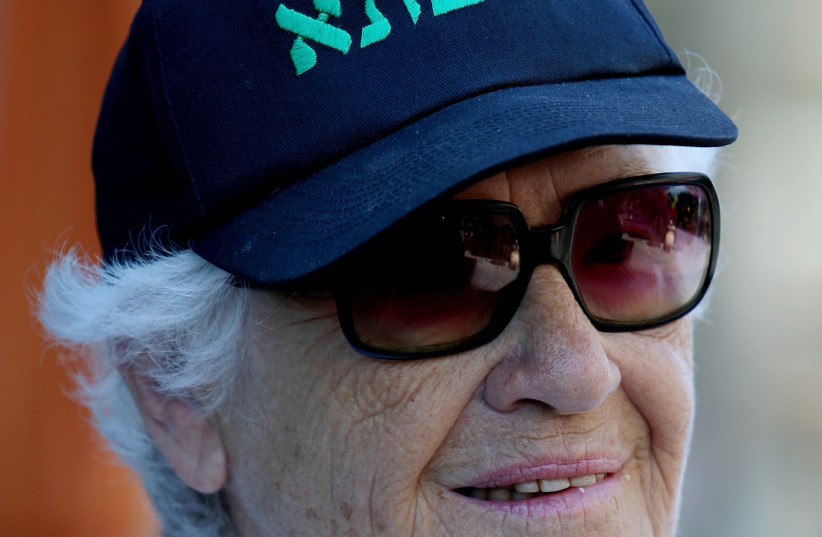
Stay updated with the latest news!
Subscribe to The Jerusalem Post Newsletter
- THE HEBREW TEACHER: THREE NOVELLAS
- By Maya Arad Translated by Jessica Cohen
- New Vessel Press
- 320 pages; $17.95
Advertisement
More from the Review
Subscribe to our Newsletter
Best of The New York Review, plus books, events, and other items of interest
November 7, 2024
Current Issue
Writing the Nakba in Hebrew
April 20, 2023 issue
Anton Shammas; illustration by Edel Rodriguez
Submit a letter:
Email us [email protected]
The epigraph to the second part of Anton Shammas’s novel Arabesques , first published in Hebrew in 1986, reads:
Dresses of beautiful women, in blue and white. And everything in three languages: Hebrew, Arabic and Death.
These lines are from a poem by Yehuda Amichai, Israel’s unofficial poet laureate. It might seem at first a curious choice for Shammas, an Arab citizen of Israel who left the country shortly after the novel came out. He had come to realize, he told a journalist at the time, that as a Palestinian and a Christian, he would not be afforded equal rights by the state. “My case is hopeless,” he said. Since then Shammas, who is seventy-two, has lived in Ann Arbor, where he is professor emeritus of Middle Eastern literature at the University of Michigan.
Citing Amichai reflects Shammas’s intimate engagement with the two languages of his youth and the chasm—the “Death”—between them. It is also a testament to a literary capaciousness that is wholly in line with his moral stance toward language. Arabesques is his only novel, but Shammas is a gifted and prolific translator to and from Arabic, Hebrew, and English. In an academic paper from 2017, he analyzed written testimony of a Palestinian prisoner during the First Intifada in the late 1980s and its subsequent translation into Hebrew and English, and referred to the “violence” caused by linguistic omissions and mistranslations. Language for him is not merely political, then, as the cliché has it. It is perhaps the most powerful—and potentially corruptive—instrument an individual may wield.
There are references in Arabesques to other giants of Hebrew literature besides Amichai. A description of a lake in the novel bears linguistic similarities to Hayim Nahman Bialik’s poem “The Pool” (1905). A rooster calls to mind The Bridal Canopy (1931), a novel by S.Y. Agnon about a wandering Jew trying to collect enough money to marry off his daughter. There are echoes of the mute twins of Amos Oz’s novel My Michael (1968) (Shammas’s twins are both deaf and mute), and of the young Palestinian mechanic in A.B. Yehoshua’s novel The Lover (1977) who strikes up a sexual relationship with a Jewish girl. (In Arabesques , the lover is a photographer, and thus on a more equal social footing with his Jewish mistress.) Placed alongside such Israeli writers are Palestinian refugee songs and proverbs, and snippets of conversations between villagers. (“How far away is it?” “One cigarette.”) And there are more distant sources of inspiration, from Clive James and Willa Cather to Samuel Beckett and David Lodge. They include this gem from Walter Abish, on the unreliability of writers: “They seem to have a certain difficulty in taking pleasure from what they are doing.”
These disparate quotations and allusions appear like flickering lights in Shammas’s dazzlingly original book—as bracing now as when it was first published. Arabesques is a postmodern autobiographical novel about extended members of a single family whose lives are framed by two traumas: the failed Arab revolt against British forces in Palestine in 1936–1939 and the Nakba (Catastrophe) of 1948, in which the nascent Israeli military drove 700,000 Palestinians from their homes. Through his descriptions of the stories handed down from one generation to the next, Shammas vividly depicts his birthplace: the village of Fassuta in the Galilee, “built on the ruins of the Crusader castle of Fassove, which was built on the ruins of Mifshata, the Jewish village that had been settled after the destruction of the Second Temple by the Harim, a group of deviant priests.”
This is classic Shammas. He never lets us forget that every street corner, every olive grove, every young child, has an origin story. And his novel branches back in time to expose the roots of those stories, whether real or imagined. In response to a history that seeks to generalize, to deny the mass Palestinian expulsion, or else to turn its witnesses into faceless “survivors,” Shammas insists on the singularity of each of his characters: “Refugees is what they’ve begun to call us, and whoever has that name stuck to him will never be able to rid his flesh of it.”
How does one write about the Nakba? In Hebrew, no less? Shammas does so by being precise, at times to the point of seeming mundanity. (The year it occurred is remembered by the villagers primarily for its poor olive yield.) He also decentralizes his novel, as it were, by choosing to drown out his narrator’s authority with the voices of relatives and fellow villagers. Such a cacophony means that the reader keeps having to leaf back to make sense of the storyline. And even that might not suffice: the voices often contradict one another. When we first meet the narrator’s aunt, she is standing on a dock in the Beirut harbor in 1928, watching her husband set off for Argentina. Later we are told that this aunt had in fact lived and worked in Haifa until 1948, and had only then escaped to Beirut. Yet the effect of all this uncertainty isn’t the usual postmodern absence of truth. Rather, it is something more attuned to how collective memory takes hold within the family. Every version of the story recounts it at a slight remove. This only heightens the sense of an oral tradition, of errors and ellipses, of tales that have been rolled over and smoothed out over the years, like the workings of time on a stone.
At the heart of the novel is a mystery: What happened to a young woman named Laylah Khoury, who disappeared from Fassuta during the war of 1948, having apparently fled to Jordan? Laylah had been delivered as a young orphan, a “blond beauty,” to a family in Tyre, Lebanon, by a boy who will grow up to become the narrator’s father. One of the family’s young daughters is Hélène—the narrator’s future mother. Laylah therefore serves as the initial link between the narrator’s parents, and he feels driven to discover what became of her. But he never arrives at an answer. At one point he describes meeting, near Ramallah, a blonde woman named Surayyah Sa’id who he has become convinced is Laylah. She invites him into her house. He apologizes for disturbing her. She reassures him, “in the more friendly voice Arab women use when they are inside their own home.” Their meeting is in every way real. Then there is this: “But in fact I never set foot in the village of Silwad, and the whole trip to see Surayyah Sa’id is just a tale.” When the past revolves around a gaping wound, a novelist must give shape to the void.
In one of the novel’s most moving scenes, an evacuation order is sent out to the residents of Fassuta. The narrator’s aunt, fearing the long road ahead with nothing to help the family advance except for a single starving donkey, rushes to feed the animal, giving it whatever sacks of barley remain in her home. Then word arrives that the Israeli commander has been duly bribed, and the order is rescinded. Only now does the woman realize what she has done:
My uncle’s wife went to the stable and took a stick. She went back to the voracious donkey and began to beat him, first with blows of rage because the family’s supply of barley was gone, then with blows of anger at herself, for having rushed to pay the beast for work he hadn’t done, and finally with blows of stifled sobbing because of the Arabs and the Jews and the rebels and the soldiers and the wars and the refugees and pitiless Fate and poverty and her bellyful of it all, and especially because she wanted to stop beating him and she couldn’t.
The Palestinian trauma of 1948 is here distilled into a single image of a poor woman and her “bellyful of it all.” But there are others: a great-uncle with a “wrinkle in the mind” who flattens tins of olive oil, hoping to construct an armored vehicle out of them to protect his son. Or the villagers who break into a dabkeh dance to signal their surrender, kicking up a white layer of dust that “did not distinguish between the conquering soldier and the conquered villager.” Arabesques , which Shammas once said was “written in Arabic in Hebrew letters,” reads as a paean to both languages and as a lament.
Everything I’ve described so far is, implausibly, only part 1 of the novel. Its title is “The Tale,” and its narrator is called Anton Shammas, who shares many biographical similarities with the author. His family moves from Fassuta to Haifa when he is a small child; he travels to a university in the American Midwest; he becomes a writer.
But something changes in the novel’s second part, “The Teller.” The narrator’s attempt at a family memoir is stifled. The story splinters. We are now in the present day, with short, numbered sections that switch from first to third person and move among different characters. One is Amira, a Jewish Frenchwoman originally from Alexandria, whom the narrator, now a grown man, befriends in Iowa City as part of a group of visiting international writers. Another is Nadia, a young mother living in Abu Dhabi. When we meet her she has just terminated an ectopic pregnancy, and there are indications that she is haunted by the procedure, though frustratingly little insight is gained into either woman. Nadia also happens to be a distant cousin of the narrator—or, to be precise, of a character based on the narrator.
Here things become even more confounding. The first-person perspective is in this second part given to a middle-aged Israeli novelist by the name of Yehoshua Bar-On—about as close to A.B. Yehoshua as you can get (down to the names’ reversed acronyms in Hebrew). This is no coincidence. In 1985, a year before the novel’s release, Shammas published an article in Hebrew in which he called on Israel to respect the national aspirations of its Palestinian citizens. In response Yehoshua publicly castigated him, writing that if he wished to live in such a state he should “move one hundred meters east”—in other words, out of Israel and into the future Palestine.
Whatever criticism the genial Shammas had until then withheld is here let loose, with a stroke of satiric brilliance, in the figure of the solipsistic Bar-On. Bar-On might have liked to write about the wife who left him, he tells us. Or about the son who got into unspecified trouble with the law. But he senses that “there has to be an Arab this time, as some sort of solution to some sort of silence.” (Note the vapid pretense in that repetition.) Bar-On is also part of the Iowa delegation, but his real reason for traveling, he divulges to the reader, is to get close to the narrator: he is attempting to write about an Arab man he nicknames “my Jew.” “My Jew will be an educated Arab. But not an intellectual,” he smugly thinks. “He speaks and writes excellent Hebrew, but within the bounds of the permissible.”
When we encounter Anton Shammas next in the novel, he appears in the third person. We come to realize that this is not really the narrator, but rather him as filtered through Bar-On, replete with misleading biographical details that we know he purposely fed to Bar-On about himself. As another visiting writer in the group says about the two men, “They haven’t decided yet who is the ventriloquist of whom.”
If the crafting of Bar-On seems a touch cruel, it’s a cruelty evenly dispensed: Shammas soon produces another satirical sketch, this time of a Palestinian author so drenched in cologne that he nicknames him Paco, after the fragrance Paco Rabanne. (This had me laughing out loud, recalling a particular ex. Did the brand ever make it as big elsewhere as it did in the Middle East?) At one point Bar-On decides to jettison Shammas and write about Paco instead. He explains this decision by admitting himself unable to grapple with ambiguity: “My former hero does not define himself as my enemy, at least not in the accepted sense of the word. And that makes it hard for me.”
The notion of a thwarted autobiography is amplified with the introduction of yet another writer, a mysterious American named Michael Abyad. There are indications that Abyad used to be called Anton Shammas, and that he is in fact an older cousin of the narrator whom everyone had presumed dead (and after whom the narrator was then named). A chance photograph of Abyad that appeared in the pages of Time in 1982 suggests that the “original” Anton Shammas may be living after all. When Abyad meets the narrator in Iowa toward the end of the novel, he thrusts a document into the narrator’s hands. That document consists of “The Tale” that we have just read—“my fictitious autobiography,” Abyad calls it. Whose story is it, then? Does any story have a single owner? “Take this file and see what you can do with it,” Abyad instructs the narrator. “Translate it, adapt it, add or subtract. But leave me in.”
Arabesques received near-unanimous praise in Israel when it came out. One critic called it “perhaps the most Israeli novel ever written.” Sentence by sentence, Shammas provides quiet, beautifully noticed portraits of pain: “The old man sat in the back seat wrapped up in his own soul.” “The silence of the poor in their hour of togetherness with the meager food on their table.” The rote letters of immigrants, which begin with some variation of “I am fine and I lack for nothing except for the sight of your shining faces.” But critics also remarked on the novel’s ornate Hebrew, a stylized language so virtuosic and rich that its similes can run for entire paragraphs. One reviewer urged readers not to be “completely captivated” by Shammas’s technical prowess.
No doubt such reviews were tainted by prejudice. (One rarely finds similar warnings about the flourishes of, say, Amos Oz.) But the language of Arabesques does at times seem to obscure the truthfulness of its writing, and its imagery calls too much attention to itself. Here’s an example, of a long-held secret finally told:
It would have been better if the story had remained curled up like a caterpillar in the cocoon of silence forever. But now the cocoon has hatched and the butterfly of the story, with a magical flick of its wings, has shaken off the webs of years of forgetfulness.
The novel’s English translation (first published in 1988), by Vivian Eden in close collaboration with Shammas, skillfully pares down many such excesses (though not in the passage above). The novel opens with a description of two deaths that happened twenty-four years apart: of the narrator’s grandmother and then of his father. This is my translation of the Hebrew: “The moth that circled above the dying body twenty-four years after that April morning had been flicked against the wall, and now flew out, as it flew in, through the barely open door.” Eden’s economical translation is: “A moth was circling above a dying body twenty-four years after that April morning.”
The English is elegantly trimmed (no door, no flicking), nicely paced, and ultimately more accessible than the original. (“The head” in the original helpfully becomes “My father’s head” in translation.) Still, to read Shammas solely in English is akin to staring at a postcard of a landscape one cannot travel to. Gone is the novel’s formal inventiveness, the thrilling sense that Shammas has managed to accomplish something with Hebrew that no other novelist had before. “What I’m trying to do,” he once wrote,
is to un-Jew the Hebrew language, to make it more Israeli and less Jewish, thus bringing it back to its Semitic origins, to its place. This is a parallel to what I think the state should be. As English is the language of those who speak it, so is Hebrew; and so the state should be the state of those who live in it.
The title of Arabesques is not merely a clever pun. It refers to an intricate architectural pattern of interlacing lines. The design lends the novel its shape-shifting form. At one point the narrator recalls his uncle Yusef, whose stories “were plaited into one another, embracing and parting, twisting and twining in the infinite arabesque of memory.” That is a faithful description of the novel’s conceit.
In 1975 the French theorists Gilles Deleuze and Félix Guattari published a slim, dense, and influential book, Kafka: Toward a Minor Literature . In surveying the works of Kafka—a Prague Jew writing in German—they arrive at a thesis that goes something like this: There exists a separate category in literature for books written by minorities in the language of the majority. Such books are by definition political: their “cramped space” does not allow otherwise, Deleuze and Guattari write. Even when dealing with individuals, the emphasis of these works is necessarily on the collective. They keep coming up against certain impossibilities—of writing in German, say, or of not writing at all—which they are nevertheless able to surpass. They are imbued with “deterritorialization,” or the uprooting of a practice, such as writing, from its natural point of departure.
Deleuze and Guattari argue that these works belong to a “minor literature” not because of their quality, but because they are written by minorities carving out places for themselves within the language of the hegemon. Explicit in this theory is the idea that writing a minor literature is a revolutionary act. “How to become a nomad and an immigrant and a gypsy in relation to one’s own language?” they ask, as if in a challenge to all writers.
Shammas has met this challenge. So have a handful of other Palestinian authors writing in Hebrew, the most famous of whom perhaps is Sayed Kashua. As an Israeli, when I read Shammas and Kashua these days, something clenches in my throat. Both of them left the country—Kashua in 2014. Israel now has the most fundamentalist and reactionary government it has ever known. One can only read with terrible sorrow the Hebrew of these writers, which appears to be not so much written on paper as etched on skin. It’s a disappearing Hebrew, a generous, lived-in, and inclusive Hebrew, and the literary world should mourn its absence.
April 20, 2023
The High Cost of Being Poor
A Formative Loss
300 Years of ‘Too Big to Jail’
Subscribe to our Newsletters
More by Ruth Margalit
Vinson Cunningham’s novel Great Expectations is nominally about the experiences of an Obama campaign staffer but is really a glimpse into the formation of a critical mind.
June 6, 2024 issue
Halldór Laxness, Iceland’s Nobel laureate, was an inexhaustibly prolific chronicler of impoverished village life, though he never got over the impracticality of literature.
November 24, 2022 issue
Ulrich Alexander Boschwitz’s novel The Passenger dwells on the hopeless roaming of a wealthy Jewish Berliner in the days immediately following Kristallnacht.
November 18, 2021 issue
Ruth Margalit is a contributing writer for The New York Times Magazine . Her writing has also appeared in The New Yorker . (June 2024)
I Burn Time
July 1, 2021 issue
Kafka’s ‘A Message from the Emperor’: A New Translation
September 29, 2011 issue
Ariadne’s Own Story
September 23, 2004 issue
No Consolation
April 7, 2022 issue
A Case for Textual Harassment
June 9, 1994 issue
June 10, 2021 issue
Danger: Thin Ice
November 18, 1993 issue
A New ‘L’Étranger’
An excellent and, in important ways, new version of Camus’s famous novel
June 5, 2014 issue

Give the gift they’ll open all year.
Save 65% off the regular rate and over 75% off the cover price and receive a free 2025 calendar!
- LET'S TALK
- LET'S EAT
- FAMILY & EDUCATION
- SOCIAL & PERSONAL
- JEWISH WORDS
- JEWISH HOW TOS
- RABBI I HAVE A PROBLEM
- EDUCATIONAL
- PROFESSIONAL
- THE FRESSER
- THE SCHMOOZE
Sign up to The JC newsletter
The hebrew teacher review: ‘big questions about the future of israel’.
Maya Arad’s trio of widely feted novellas examine the familial and professional challenges facing Jews in California and in the Jewish state

BY David Herman
- Jewish books

Critically acclaimed: Maya Arad Credit: Jewish Book Council
Maya Arad is an Israeli-born writer, now living in California. She was born in 1971, so part of the same generation as Etgar Keret and Eshkol Nevo. Arad has published 11 works of fiction but The Hebrew Teacher , published in Israel in 2018, is her first to be translated into English. A book of three novellas, it has received acclaim from many leading writers including Ayelet Gundar-Goshen, Allegra Goodman and Elif Batuman.
The title story, The Hebrew Teacher , is the most political and topical of the three. Ilana Goldstein has taught Hebrew at a small-town college in America for 40 years. Her life is turned upside down by an appointment in her department. It turns out that Yoad Bergman-Harari, like Ilana, born in Israel, is appalled by the new Israel. Ilana not only teaches Hebrew, she embraces her Jewishness, cooking classic Jewish food, observing the holidays (unlike her grown-up children). At first, she is baffled by Yoad’s politics but then cannot cope with his aggressive anti-Zionism.
But The Hebrew Teacher is not just about politics. It is about issues that run through the other stories. In each story the central character is a woman. Miriam is a grandmother in her seventies, visiting her son and his family, in California. Efrat, also lives in California, with her husband and two children.
These women face very human problems that many readers, perhaps especially women, will identify with. Miriam is estranged from her son, cannot connect with his wife, and cannot form the bond she longs for with her grandson. Efrat is worried about her daughter who is nearly 13. Libby is overweight, spoilt, and, most worryingly for her mother, has no friends at school.
This turns out to be the key link between all these stories. All these women are likeable, passionate about their Jewishness, but they seem strangely isolated. Ilana has become marginalised at work. The ghastly Yoad loathes her and no one will stand up for her. Miriam is a widow, and seems to have lost her son and his family to the remote world of California. Efrat is losing touch with her daughter and her very American teenage world of mobile phones and sleepovers.
Suddenly you realise Israel is not just about the conflict with Palestinians. It’s a very different culture from the new world of California with its high-tech lifestyles and venture capitalists. In Arad’s stories Israel is about an old world of traditional values, above all, family and religion, California is about dysfunctional families and losing touch with the Jewish past.
In A Visit , the story of Miriam’s visit to her son, California seems a world away from Israel. It’s not just the geographical distance. The cultural difference seems much greater. These three women, a grandmother and two middle-aged mothers, find their families and their new lives difficult to deal with, their loneliness almost unbearable.
They try to deal with the problems of living with two languages. Ilana, the Hebrew teacher, cannot attract new students. “It wasn’t a very good time for Hebrew,” she reflects. Is that because of the troubles in the Middle East? Or does Israel seem remote to her new students? As she sets out to write a memoir, she wonders whether she should write it in Hebrew, the language she loves, or English, the language her students live in. The dilemma recalls the one earlier one around Yiddish literature in America. Does it have a future? Who does it speak to?
As we watch, appalled, by the rise of antisemitism and the crisis facing Israel, these stories ask big questions about the future of Israel and of Jews in the English-speaking world.
The Hebrew Teacher, by Maya Arad
New Vessel Press, £16.99

JC2’s guide to the best new books for toddlers, teens and those inbetween

The Apprentice review: ‘What would Melania Trump say?’

Almeida Theatre 1950s double bill: ‘An angry return to the kitchen sink’

‘The Holocaust was the biggest smash and grab job in history’

What We Talk About When We Talk About Anne Frank review: ‘a play as Jewish as they come’
Have the JC delivered to your door

Want more from the JC?
To continue reading, we just need a few details....
©2024 The Jewish Chronicle
- Advertising
- Terms & Conditions
- Cookie Policy
- Privacy policy
The Hebrew Teacher by Maya Arad
general information | review summaries | our review | links | about the author
- Return to top of the page -
B : solid variety, with some interesting shading
See our review for fuller assessment.
From the Reviews : "The three novellas that make up her new book all concern Israelis who live in the United States and make their living in connection with academia or high tech. If this sounds like a narrow sociological vein to mine, all the more credit to Arad, who is one of the most talented Israeli novelists of her generation and who here offers profoundly moving and universal vistas of experience, sorrow, and humor by observing her local reality with humane intelligence. (...) (T)here is nothing tendentious about Arad’s stories. She touches, gently, on a range of sociological patterns -- the shaky status of Hebrew among the American children of her Israeli characters, for instance, and the looser, sometimes nonexistent family ties in America as compared with Israel -- but her purpose is not to offer critique but to observe her characters in their all-too-human complexity. (...) Arad’s stock-in-trade is a rare mix of intellect and warmth." - Michael Weingrad, Jewish Review of Books "Arad’s stories neither negate the diaspora nor negate its negation, but they say a great deal about the diasporic experience of Israeli academics and entrepreneurs who have left one promised land for another. (...) The dilemmas in The Hebrew Teacher are archetypal. The old and young oppose each other. Husbands and wives disagree. Children stumble and break away. These are powerful conflicts, but the particulars of language and culture and place set Arad’s work apart." - Allegra Goodman, Jewish Review of Books Please note that these ratings solely represent the complete review 's biased interpretation and subjective opinion of the actual reviews and do not claim to accurately reflect or represent the views of the reviewers. Similarly the illustrative quotes chosen here are merely those the complete review subjectively believes represent the tenor and judgment of the review as a whole. We acknowledge (and remind and warn you) that they may, in fact, be entirely unrepresentative of the actual reviews by any other measure.
The complete review 's Review :
One short passage suggests that the popularity of the name Eitan, which was not even in the top ten last year, stems from the name of the operation in Gaza a year and a half ago, Tzuk Eitan -- Protective Edge. "But what's the problem ?" She fails to understand. "If I have to explain to you what the problem is, then we're both in trouble," Yoad decrees. "Seriously, I don't understand ..." "Just imagine," he says with dripping mockery, "that in German class on campus the teacher reads the students an innocent article about a historian who digs through archives and finds that in 1942 there was a jump in the number of German babies named Friedrich, as a result of Operation Barbarossa."
Yoad seems eager for a fight now. "Two thousand casualties on one side, seventy-two on the other. Five hundred children dead ... That government murders children in cold blood !" "Yoad ..." She cannot avoid the scolding tone, as if she's his teacher. "You're ignoring the context. It's not as if the government got up one day and started bombing Gaza. We withdrew, we gave them the Gaza Strip, for peace ..." "We gave them the Gaza Strip !" Yoad imitates her. "We put them under siege, is what we did. Two million people in prison. Under inhumane conditions." "We withdrew," she repeats, sticking to the facts -- surely he can't disagree. "And they fired at us ceaselessly !"
"Let's say we had another one, three or four years younger than Yotam. We could have gone out today with the two of them. It wouldn't have felt so ..."
"But if I give her a phone she'll never get off it !" Roni laughs. "Efrat, what planet are you living on ? That ship sailed long ago. This is our world. You want a kid without a smartphone ? Join an ultra-Orthodox sect."
- M.A.Orthofer , 24 January 2024
About the Author :
Hebrew-writing author Maya Arad (מאיה ערד) was born in 1971. She lives in the US.
© 2024 the complete review Main | the New | the Best | the Rest | Review Index | Links
Mobile Icons

Header Top Menu
Social icons.
- Email Address

‘The Hebrew Teacher’
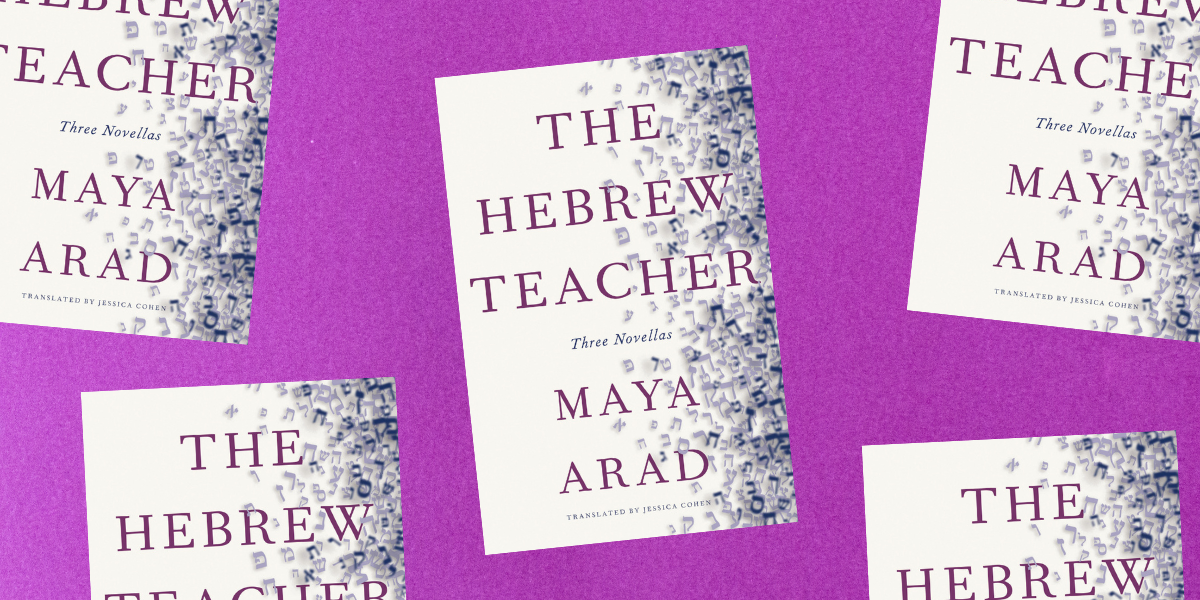
The Hebrew Teacher: Three Novels By Maya Arad. Translated by Jessica Cohen (New Vessel Press)
Devotees of Israeli literature may already be familiar with Maya Arad, considered one of the foremost Hebrew writers living today, and her most recently translated book, a compilation of three novellas—in order, the titular “The Hebrew Teacher,” “A Visit (Scenes)” and “Make New Friends”—offers many rewards. First among them are her richly drawn portraits of three Israeli women, each the main character of one novella.
Arad, a writer-in-residence at Stanford University, knows the terrain she vividly depicts. The first and second stories in the book take place in and around Palo Alto, Calif., home to Stanford, close to countless startups and a magnet for the tens of thousands of highly educated Israeli expats who have come to Silicon Valley hoping to make it big.
In “A Visit (Scenes),” Miriam is an octogenarian who visits the United States to meet her toddler grandson. She must parse a tense domestic situation between her son, an entrepreneur who has made a bad business decision, and his considerably younger wife, whose disappointment in her spouse oozes off the pages.
Arad captures the gestalt of the enclaves these Israelis have formed near Stanford, where it is not unusual to hear Hebrew spoken in the local grocery market and where, more quietly, expats struggle to find the right balance between their identities as comfortable Northern Californians and their frayed connections to their Israeli values.
As Efrat, a Stanford biologist and worrying mother to a middle-schooler in the third novella, “Make New Friends,” bemoans about her daughter, “The girl is almost thirteen, for God’s sake! When she was that age, it would never have occurred to her to make her mother get up to bring her stuff. She can’t remember anyone making her breakfast after age ten. She made her own school lunch, too. If she forgot, she went hungry. No one ran after her with a lunch bag.”
Yet the character most precipitously sitting on the cusp between an uncertain future and the comfort of the past is Ilana, the Hebrew teacher in the title story. For decades, Ilana has thrived as an adjunct professor at a large Midwestern university. But now she must confront certain realities: declining enrollment in Hebrew-language classes, shifting politics on campus and, most acutely, a new colleague who supports the growing Boycott, Divestment and Sanctions (BDS) movement against Israel.
Arad wrote this story well before the current Israel-Hamas war, but she is strikingly prescient in her understanding of contemporary schisms, particularly as they pertain to Israel.
Ample credit should go to award-winning translator Jessica Cohen for her seamless work. She has helped make The Hebrew Teacher a must-read in 2024.
Robert Nagler Miller
Leave a Reply Cancel reply
Your email address will not be published. Required fields are marked *
Save my name, email, and website in this browser for the next time I comment.
Footer Menu Column 2
- Israel + Diaspora
- Culture + Travel
- Community + Faith
Footer Menu Column 3
- Terms & Conditions
Footer Menu Column 4
- Make a Gift

©2024 HADASSAH, THE WOMEN’S ZIONIST ORGANIZATION OF AMERICA, INC. HADASSAH, THE H LOGO, AND HADASSAH THE POWER OF WOMEN WHO DO ARE REGISTERED TRADEMARKS OF HADASSAH, THE WOMEN’S ZIONIST ORGANIZATION OF AMERICA, INC.
Jewish Book Council, founded in 1943 , is the longest-running organization devoted exclusively to the support and celebration of Jewish literature.
Get the latest reviews, news, and more in your inbox.
The Hebrew Teacher | Jewish Book Council
- Authors & Contributors
- Reading Lists

The Hebrew Teacher
Maya Arad ; Jessica Cohen , trans.
According to many critics, Maya Arad is the most accomplished Hebrew-language writer living outside of Israel, and perhaps one of the best Israeli novelists of her generation. Throughout her eleven novels and books of short fiction, she has created deeply affecting and often wrenching portraits of the foibles of contemporary society, particularly those of middle-class families and academia. So while it’s a little surprising that The Hebrew Teacher is the first to be translated into English, it surely won’t be the last. Composed of three novellas centered on three Israeli immigrants to the United States (each woman is in a different phase of their acculturation to the new society), and the families, friends, and colleagues surrounding them, this book is bristling with insights into the sharp divides between cultures, and between generations.
The title story begins with the stark utterance: “ It wasn’t a very good time for Hebrew.” Born in 1948 , Ilana is an adjunct professor who has spent decades laboring on behalf of the language, music, and popular culture of her beloved Israel (or at least the 1990 s-era society she once knew). She frets when a rising academic star (he dabbles in what he calls the “ Jewish” Heidegger) who has only contempt for Israel — as well as for Ilana’s devotion to such causes as Hillel and Jewish adult education — is hired at her university. Ilana is an important figure, and the inevitability of her painful downfall and transformation into an embarrassing relic of the past seems to reflect both the decline of Hebrew-language enrollment and the Jewish state’s transformation into a global pariah. Yet despite Ilana’s professional humiliation, Arad brings most of her focus to bear on Ilana’s enthusiasm for a memoir-writing class. Ilana struggles to write at first (“Forty-five years outside of Israel and she has no language”), but eventually she succeeds in conjuring up precious fragments of a life that was not uneventful and not without meaning.
In both the collection’s subsequent novellas, Arad proves adept at rendering the often excruciating negotiations and balancing acts of married life and parenting. The domestic drama at the heart of “ A Visit (Scenes)” is set off by the untimely visit of the husband’s aging Israeli mother, who inadvertently exposes the schism in her son’s marriage as she desperately strains to find a place for herself in the family’s affections. The clashing dynamics are explored through fragmentary vignettes that offer a bittersweet affirmation of the endurance of familial bonds. And in “ Make New Friends,” bitter battles are waged over “ screen time,” body image, and the betrayals and loneliness of middle school. This novella culminates with a jaw-dropping intervention when Efrat, a mother who wants only the best for her distressed daughter, crosses the line. Efrat’s startling yet utterly plausible response to her child’s unhappiness is guaranteed to make readers gasp — yet perhaps also nod their head in sad recognition.
Arad’s Israeli female characters struggle to find grace after personal and professional setbacks; and this memorable collection illuminates their tumultuous journeys with wisdom and compassion, achieving the kind of intimacy that may remind some readers of Grace Paley. Arad’s portraits of contemporary life achieve that rare balance between comedy and pathos, satire and empathy — often on the same page. The deeply affecting portrayals of various forms of estrangement, missed connections, and distances will likely linger in readers’ imaginations for a long time. The world of contemporary Israeli literature in English translation simply wouldn’t be the same without Man Booker International Prize winner Jessica Cohen’s exceptional work. Maya Arad’s penetrating voice is well served by Cohen’s sensitive and intelligent translation.
Ranen Omer-Sherman is the JHFE Endowed Chair in Judaic Studies at the University of Louisville and editor of the forthcoming book Amos Oz: The Legacy of a Writer in Israel and Beyond.
Discussion Questions

Help support the Jewish Book Council.
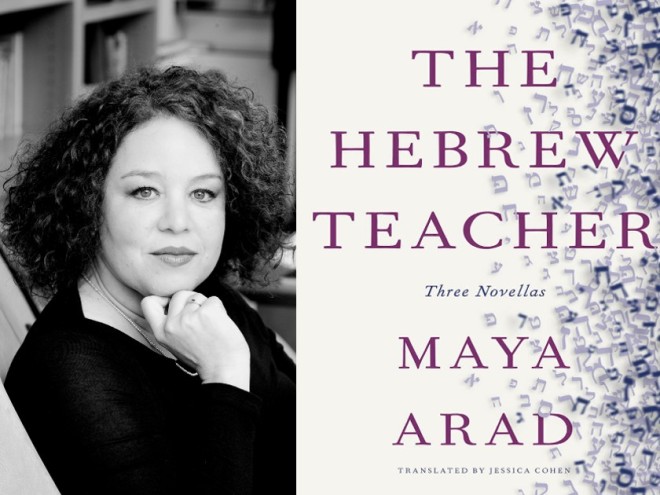
Academia and Israeli Expats: A Conversation with Maya Arad
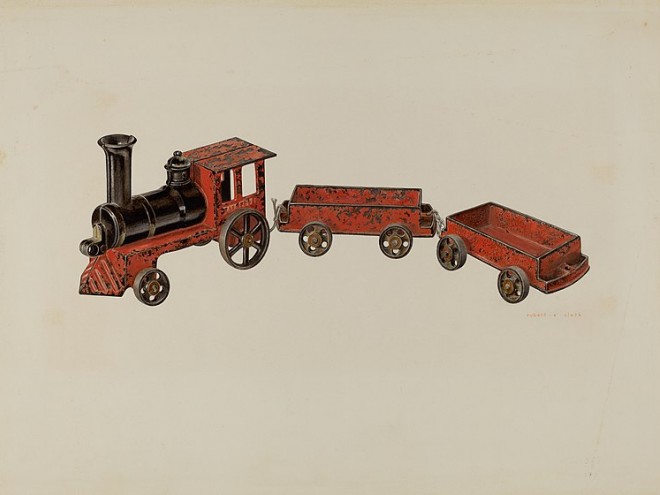
Excerpt: Our Lady of Kazan
Translations and Translators
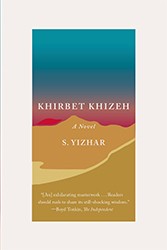
ⓒ 2024 Foreword Magazine, Inc. All rights reserved.
- Book Reviews
- Foreword Reviews
- Translations / Literary
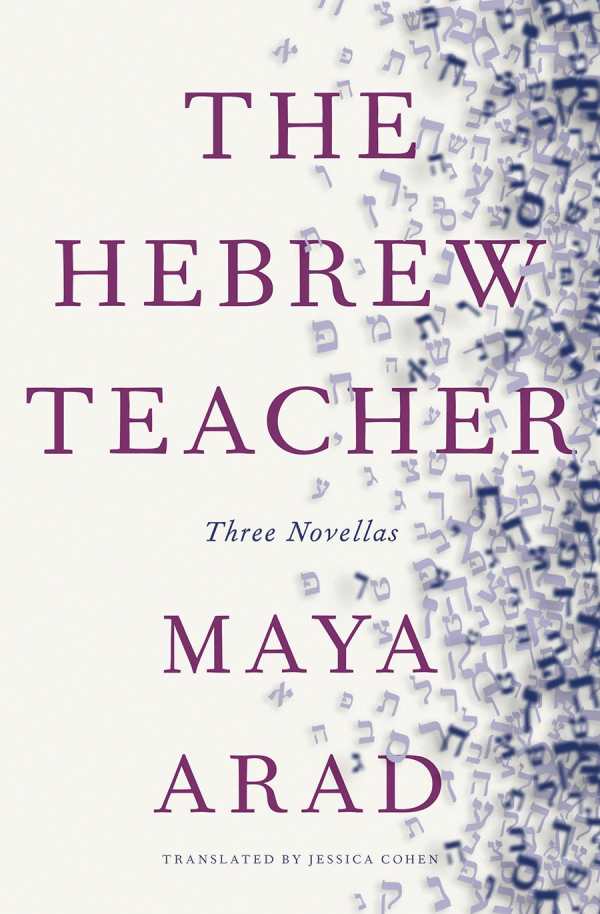
The Hebrew Teacher
Maya Arad Jessica Cohen (Translator) New Vessel Press ( Mar 19, 2024 ) Softcover $17.95 ( 320pp ) 978-1-954404-23-6
Cultures and generations clash in Maya Arad’s insightful novella collection The Hebrew Teacher , which follows three storylines whose flows are sometimes concentric.
Ilana is a Hebrew professor. She’s been at her school for “forty years and no one has ever interfered in her teaching. This is her fiefdom. It’s small, but it’s hers.” But her situation in her department becomes precarious when Yoad is hired as the new professor of Hebrew literature. The two disagree over what it means to be Israeli. Soon, their uneven power dynamic threatens Ilana’s life’s work.
Miriam is on her first visit to California to see her grandson. Value-based generational differences soon become evident: Miriam’s son Yoram and his wife Maya’s marriage is on the fritz because a multimillion-dollar business deal fell through. The situation comes to a head when Yoram suffers a heart attack.
Elsewhere, Efrat internalizes the anxiety of her adolescent daughter Libby, who has trouble making friends in the age of the smartphone. Efrat’s own adolescent trauma is triggered, leading her down a path toward catfishing and jeopardizing her daughter’s fragile position in the cutthroat hierarchy of middle school girls.
With clarity and insight, The Hebrew Teacher dissects divides among Israeli immigrants in California. The American hunt for status collides with the less pretentious Israeli lifestyle. Vertical and horizontal disagreements between generations come to the fore when Ilana and Yoad argue over Israel and Palestine, Yoram and Maya struggle with the age difference in their marriage, Miriam questions Maya over motherhood, and Efrat and Libby butt heads over how to behave in a social media age.
With clarity and insight, the novella trio The Hebrew Teacher dissects the challenges of living as Israelis in California.
Reviewed by Erika Harlitz Kern March / April 2024
Disclosure: This article is not an endorsement, but a review. The publisher of this book provided free copies of the book to have their book reviewed by a professional reviewer. No fee was paid by the publisher for this review. Foreword Reviews only recommends books that we love. Foreword Magazine, Inc. is disclosing this in accordance with the Federal Trade Commission’s 16 CFR, Part 255.
Taking too long? Try again or cancel this request .
- Books Learning Guide
The 9 Best Books to Learn Hebrew Fast

Langoly is supported by our readers. We review products independently, but we may earn affiliate commissions if you buy through links on this page. As an Amazon Associate, Langoly earns from qualifying purchases. Please read our full disclosure for more information.
Hebrew is a unique language steeped in history and tradition. But if you’re looking to learn it, where should you start? With so many resources available, it can be hard to choose the right one for you. This guide puts together the 9 best books for learning Hebrew and the features that set them apart. No matter your level or reason for learning Hebrew, you’ll find a book that fits your learning goals.
The Hebrew language is one of the oldest still in use. With 3000 years of history, it has immense cultural and historical value. Once a nearly dead language, Hebrew has been revived and evolved to fit modern times (Modern Hebrew). Approximately 9 million people speak Hebrew. It’s the official language of Israel but is also spoken by large communities of people around the globe.
How We Picked and Tested the Best Books to Learn Hebrew
For any language learning products we’ve tested or researched, we follow a strict testing methodology to make sure our experts make the same considerations. Here are the factors we looked at when testing Hebrew learning books specifically:
- Structure and Topics : We examined how each book is laid out and if it follows a structure that promotes the learning and retention of the language. We also looked at what skills the book teaches to determine if it’s effective for its intended purpose.
- Quality of Content : We looked at several chapters of the book to determine the quality of the content. We looked at the explanations and examples to see how clear and effective they are. We also took into account any additional material included such as audio tracks, flashcards, and access to online practice.
- Value for Money: We compared the price of the book with the previous factors to see if it’s a good value for the cost.

Our Top Picks to Help You Learn Hebrew
Scroll down to discover the 9 best Hebrew textbooks and how they can help you learn the language.
The Routledge Introductory Course in Modern Hebrew
Best overall hebrew book.
The Routledge Introductory Course in Modern Hebrew is the best overall book to learn Hebrew because its diverse and extensive information can help you learn the language, even without a teacher. Throughout its 90 lessons, you’ll find substantial grammar explanations, texts covering relevant topics, and even dialogues to help you understand real-life interactions. The book begins from the basics, teaching the letters and pronunciation of the Hebrew alphabet, which is helpful if you need a refresher or are starting with no prior knowledge of the language.
The book places a strong emphasis on developing your reading comprehension skills. I like that the book includes different types of reading material, such as dialogues, newspaper articles, and even poetry. Additionally, there is a companion website that includes interactive exercises, videos, and more so you can practice in different formats as well as listen to how Hebrew is spoken. You can learn more about the book here .
Key Benefits
- Thorough explanations help self-study learners without the need for a teacher
- Wide variety of practice material in different formats so you can practice all language skills
- Cultural notes about Israeli society shows how the culture and language are connected
Hebrew for Beginners
Best for beginners.
Hebrew for Beginners is the best choice for beginners because it doesn’t assume you have any prior knowledge of the language and starts with the basics. The goal of Hebrew for Beginners is to take you from a beginner level to an intermediate level in 10 weeks. Realistically, you probably won’t reach an intermediate level in such a short amount of time, but the book does cover language foundations which will put you on the right track for further study. A large importance is placed on learning Hebrew for communication purposes and each unit clearly lays out what communication skills will be focused on.
Every unit is divided into three columns with the original Hebrew, an English translation, and Hebrew pronunciation. With this book, you will learn the basics of the Hebrew language and get comfortable applying it in the real world. I appreciated that the book doesn’t use pronunciation symbols (Nekudot) which aren’t commonly seen in Modern Hebrew. Rather, the focus is to learn the correct pronunciation from the beginning without relying on this extra assistance. You can see what you think about the book here .
- Good for learners with limited time because you learn the basics in 10 weeks
- Side-by-side text and translation and a Hebrew pronunciation guide ensure that you understand what you’re learning and can pronounce it correctly
- The focus is on everyday communication so you’ll learn how to have conversations in common situations
Hebrew Workbook for Beginners
Best for learning the alphabet.
The Hebrew Workbook for Beginners is the best book to learn the Hebrew Alphabet. Since Hebrew is written from right to left and uses a different alphabet, learning how to write and read it is a necessary building block for learning the language. This textbook teaches you to write the Hebrew alphabet with an easy-to-follow methodology and whimsical explanations. It doesn’t require you to have any previous knowledge, because the lessons touch on the basics of the language. After completing the exercises in this book, you’ll be able to read and write the Hebrew alphabet without even thinking about it.
The book also includes fun, colorful infographics and images that make using this workbook more entertaining so you’ll want to keep practicing. The book is an excellent choice for learners of any age, including children and learners with no prior knowledge of Hebrew. I found it interesting that to teach the pronunciation of the letters, they used cognates (words that sound similar in both English and Hebrew). This is a clever way to teach proper pronunciation. Overall, this book is definitely worth its price because it helps you develop a crucial building block method to learn Hebrew. See if this book is right for you here .
- Learn to write the Hebrew alphabet in an entertaining way to help you remember it
- Extensive practice pages so you’ll learn each letter and retain it in the long run
- It doesn’t require any previous knowledge so anyone can use it.
Learn to Read Hebrew in 6 Weeks
Best for learning hebrew quickly.
There are many textbooks to learn how to read Hebrew, but Learn to Read Hebrew in 6 Weeks is the most effective book for learning to read Hebrew quickly . In fact, if you follow the book closely, you will be able to read the Hebrew Bible, psalms, and the Siddur at the end of 6 weeks. To achieve this, you only have to complete a short lesson twice a week. I recommend this book because of its focus on time – it wants to help you learn in the most efficient way. The author uses fun memory tricks to help you remember the Hebrew letters and their phonetics, and the book is written in a friendly, simple way so that anyone can understand the text explanations.
I love the brief explanation the author gives about writing from right to left as well as how she introduces the concept of no vowels in written Hebrew. Every letter has an illustration that will help you remember what sound it makes. This is a helpful way to reinforce the letters, and it shows that the author really cares about teaching the alphabet effectively. I recommend this book for beginners who already know the Hebrew alphabet and some vocabulary, but it could honestly be helpful for anyone because of how simple the writing is. You can see if this book is right for you here .
- Learn the Hebrew alphabet quickly to be able to read and speak Hebrew with ease
- Fun memory tricks help you remember phonetic sounds and pronunciation.
- Clear learning plan makes it easy to learn without getting overwhelmed
The First Hebrew Primer
Best for biblical hebrew.
The First Hebrew Primer is the best Hebrew book available if you are looking to read the bible or other texts in Biblical Hebrew. At 402 pages, this hefty book starts you at the basics of pronunciations and you’ll be reading entire chapters from the bible by the end of it. With its in-depth explanations about verb use, grammar, and vocabulary, it touches on all the language skills you need to learn Biblical Hebrew at home. However, I would definitely recommend working through this book with a tutor to ensure you’re learning proper pronunciation.
Because the focus is on Biblical Hebrew, not Modern Hebrew, you won’t learn conversation and speaking. If this is your goal, you’ll need a different resource. But The First Hebrew Primer is a good option for self-learners because there are comprehensive practice exercises to help you polish your Hebrew skills and a separate answer booklet to check your answers. I recommend this book for adult beginners and intermediate-level students. It’s a little pricier than some others on the list, but it’s well worth it if you’re a serious Biblical Hebrew student. See if the book is right for you here .
- Thorough explanations about grammar and vocabulary so you can reference it later in your studies
- Includes a separate answer book to check your understanding of the lessons
- Gives you more reading material in addition to biblical quotes to help you practice more
These Are The Words: Essential Biblical Hebrew Vocabularies
Best for vocabulary.
These Are The Words: Essential Biblical Hebrew Vocabularies is the best book to learn a lot of Biblical vocabulary quickly. It’s designed to help Hebrew students learn to read the bible. Like in a normal dictionary, you’ll find entries accompanied by their respective definitions. However, These Are The Words ’ most special feature is that it also includes the correct prefixes, corresponding pronouns, and tense particles for each word. And that’s the reason I recommend it – it helps you learn the words themselves, but it also teaches you about the words.
Once you finish using this book, you will have learned enough vocabulary to start reading the Bible with ease. I suggest it to anyone learning Biblical Hebrew because it can easily be used as a reference when needed. The physical book itself is compact and lightweight, so you can easily fit it in your bag and take it with you on tours or trips to the museum too. Students of all levels can use this book, and it’s a worthwhile and inexpensive addition to any Hebrew student’s library. You can see if it’s right for you here .
- The words are listed in frequency order so you can focus on the most essential vocabulary
- Excellent for building practical vocabulary that will help you to read the Bible effectively
- Small and easy to carry around and can be used as a reference throughout your studies
1000 Hebrew Sentences: Dual Language Hebrew-English, Interlinear & Parallel Text
Best for dual language methodology.
1000 Hebrew Sentences is best for learners who prefer the dual language methodology. As the title says, it teaches you 1000 sentences written in Hebrew and English. At first, this might seem like a strange way to learn the language, but having parallel English translations available can be helpful to beginner and low-intermediate Hebrew learners. The book also teaches the letters of the Hebrew alphabet and its phonetics. Each sentence has parallel English text that makes the experience of learning how to form sentences in Hebrew less intimidating. And that’s the main reason I recommend it.
If you’re interested in improving speaking and pronunciation, there are audio recordings of all the sentences available too. However, these have an additional cost. In my opinion, they should be included with the purchase of the book. Regardless, the book is still useful for exploring and learning sentence structure in a hands-on way. But since it doesn’t cover basic Hebrew grammar, it would be better suited for students with some previous knowledge of the language. You can learn more about the book here .
- Interlinear and parallel Hebrew-to-English sentences make reading in Hebrew less intimidating
- 1000 sentences on varied topics so you’ll learn how to use words in different contexts
- Learn sentence structure through practical examples that allow you to “absorb” grammar
Modern Hebrew Verbs Step By Step
Best for grammar.
Modern Hebrew Verbs is the best book for grammar because it teaches the logic behind verb structure so you will never have to stress about it again. Learning the different verb tenses is often a big obstacle for any language learner, and this book gives clear examples for every verb and shows you how to use them in the right context. In addition, it also gives the infinitives, past, and future forms of the verbs. I recommend this book because you see examples of how to use the verb correctly in many different forms. After reading it, you’ll have no doubts about conjugating verbs!
This book doesn’t make you memorize long lists of words either. It’s the perfect book for self-study because you learn about binyanim (Hebrew verb structure) without having to pay for the help of a teacher. All levels of Hebrew language learners can use this book, but I mostly recommend it as a tool for beginners. It’s a great reference book and helpful for understanding binyanim . See what you think about the book here .
- Teaches the logic behind verb structure so you don’t have to worry about memorization
- Has examples for every verb and their infinitives, present, and past tenses so you can see how to use them correctly
- Workbook with drill sheets reinforce what you’ve studied to help you remember it in the long run
My First 100 Hebrew Words
Best for kids.
My First 100 Hebrew Words is the best book for children to start learning Hebrew vocabulary. It only teaches 100 words, but it’s very child-friendly and it includes colorful pictures with easy-to-read letters. The book also features phonetic pronunciations and English translations for every word so you can help your child pronounce the words even if you don’t know Hebrew yourself. All words are grouped in topics like shapes, food, animals, toys, etc.
With this book, children can start their Hebrew learning journey at home. It’s easy to understand and fun to flip through. Age aside, this is a book every beginner-level student can use, even if just to brush up on basic Hebrew vocabulary. I like that the book also includes the translation and phonetic pronunciation of the word so it’s easy to understand and pronounce the words. See more about the book here .
- Large, colorful pictures make the book visually appealing and help engage children
- No previous knowledge is required because each word includes the English translation
- Phonetic pronunciations and a guide on how to read the phonetics help you correctly pronounce the words you are learning
Other Hebrew Books We Considered
While the Hebrew books on this list were our favorites, we researched a handful more. Here are a few other options I looked at that didn’t quite make the final list:
- Conversational Hebrew Quick and Easy teaches you the 350 most used words to enable communication quickly without getting caught up in complicated grammar. This type of learning is a good choice if you’re preparing for a trip or only need to learn a few words and phrases, but if your goal is to become intermediate or advanced, you’ll need a better resource.
- Hebrew Alphabet Letters And Their Spiritual Meanings aims to help you learn the Hebrew alphabet but also dives into what each letter means and its spiritual importance. It’s an excellent choice if you’re interested in learning Hebrew for religious reasons, but other books will help you learn the alphabet more quickly.
- Teach Yourself to Read Hebrew is a short book that teaches you the Hebrew alphabet by increasing the letters in a systematic way. After finishing the book, you’ll be able to read and transliterate the alphabet, but you won’t necessarily understand the words you are reading without another resource.
Why You Should Use Books To Learn the Hebrew Language
Using books to learn Hebrew as a second language is a good way to practice your vocabulary, writing, and reading skills. Once you understand the alphabet, grammar rules, and vocabulary, you will only have to worry about perfecting your speaking and listening comprehension, which you can do with a Hebrew language app or online course . You can also choose books on specific topics, such as a Biblical Hebrew textbook or literary works to complement your studies.
If you already know some Hebrew, a language textbook can come in handy when you want to refresh your language knowledge. Having books available might also be a requirement to practice skills like writing and reading. With Hebrew, for example, a textbook that teaches how to write and pronounce the alphabet letters is a must-have.
How To Use Books To Learn Hebrew
To learn Hebrew using books, you need to create a study plan. First, you should examine your language goals and decide how you want to start. Learning the Hebrew alphabet and its phonetics is a good place for beginner students.
Next, you will have to follow your study routine, since the only way you will learn Hebrew is with constant practice. You can use different books specialized in specific language learning areas to help you reach the intermediate and advanced levels. And you can always find books that provide practice material or audiovisual resources to ensure you are practicing all language skills.
Best Books To Learn Hebrew: Final Thoughts
The books on this list will help Hebrew students improve their knowledge of the language. There are comprehensive textbooks that cover everything needed to learn Hebrew. You can also find books that focus on a specific area of language such as learning vocabulary or how to write and read the Hebrew alphabet. There is an option available for everybody’s learning style.
Best Books To Learn Hebrew: FAQ
There are many reasons to learn Hebrew. It has a unique history and cultural value. It is one of the most ancient languages in the world and, unlike Latin, it has been modernized to adapt to current times. It’s also the primary language spoken in Israel, a country of increasing worldwide importance.
It is not easy to learn Hebrew fluently. The U.S. Department of State classifies Hebrew as a hard language for English speakers to learn because of significant differences between the two languages. For example, Hebrew uses a completely different script and is written from right to left. There are also different grammar rules and certain pronunciations that don’t exist in English. But don’t let these differences deter you. With hard work and lots of practice, you’ll see steady progress.
According to the US State Department, it takes 1,100 hours to learn Hebrew. However, this number is an estimate and depends on different factors such as your natural ability to acquire languages and if you already know a language that’s similar to Hebrew. Check out the fluency calculator to see how long it will take you to learn Hebrew.
It is possible to learn Hebrew at home. There are many online resources available, such as apps, courses, and online lessons that can help you study. Learning any language takes time and effort, and it helps to create a study plan to stay on track and see continual progress.
Maria Claudia Alvarado
Leave a reply cancel reply.
Your email address will not be published. Required fields are marked with (*). Comments are moderated and may not publish immediately.
Have you tried this product? How would you rate it?
Save my name, email, and website in this browser for the next time I comment.
Table of Contents

This website uses cookies to help us give you the best experience when you visit our website. By continuing to use this website, you consent to our use of these cookies.

Prof. Avihu Zakai
Department of history, 2084fbffb58f1b33dd480916eaa08bdc.
- Publications
- Google Scholar
- Toggle Increase Font Size text_fields
- Toggle Grayscale format_color_reset
- Toggle Negative Contrast invert_colors
- Toggle High Contrast contrast
- Toggle Light Background light_mode
- Toggle Highlight Links links
- Toggle Readable Font title
- Reset restart_alt
- Book Chapters (2)
- Book Reviews
- Journal Articles (14)
- Magazine Articles (15)
- Miscellaneous
- Newspaper Articles (8)
- Web Articles
Doctor Faustus and Machiavelli (Book Review) (In Hebrew)
- EndNote XML
BOSTON'S PREMIER ONLINE ARTS MAGAZINE

Book Review: Maya Arad’s “The Hebrew Teacher” — Balancing Conflict and Compassion
By Roberta Silman
This disturbing and beautiful book concerns itself mostly with Israelis living in America, and Maya Arad has brought her characters and their stories to life in meaningful and unforgettable ways.
The Hebrew Teacher by Maya Arad. Translated by Jessica Cohen. New Vessel Press, 386 pages, $17.95
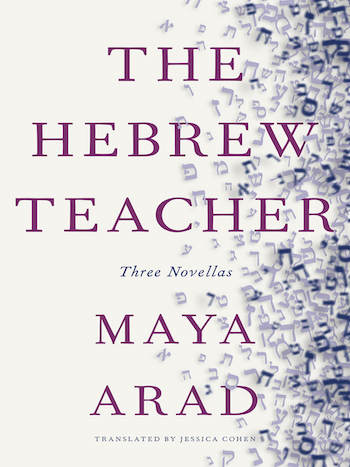
This book was first published in 2018, yet the first of the three, “The Hebrew Teacher,” is as relevant today as it was six years ago. Ilana’s world is turned upside down by the arrival of a young Israeli, Yoad, in the Department of Hebrew Literature. She has been teaching Hebrew as an adjunct professor at a small Midwestern college for 45 years; although registration has been slowly going down in her classes, she has always felt she was valued. Her husband Shelley has just retired and her adult children have moved far away, but she is determined to stay put and continue to teach her students the joys of her native language. Soon, though, it is clear that Yoad’s views about Israel and the diaspora clash with hers. He belongs to the new generation of young Israelis who are horrified by the situation in Gaza — and this story takes place well before the Hamas attack on October 7th, 2023 — which he describes as “two million people in prison. Under inhumane conditions.” Unsurprisingly, they try to parse their differences.
She is beginning to regret her tirade. Even to her own ears, she sounds like a schoolteacher. But what can she do? It infuriates her that young people like Yoad don’t understand that Israel is nothing less than a miracle. They take it for granted, they cannot see that there was a hairsbreadth between its existence and … God forbid what would have happened if that country did not exist.
What unfolds is entirely predictable but heartbreaking. It is to Arad’s credit that she has created characters who are so believable, who belong to the same “tribe,” yet are so cruelly disassociated from each other. Before long Ilana’s assumptions about her place and her views on how to teach Hebrew are called into question. In the guise of a story about campus politics — including all its nasty machinations — Arad has given us a much deeper and more penetrating story about the existential questions that now hover over any discussion about the future of Israel. This is very hard to do, yet she has managed it brilliantly.
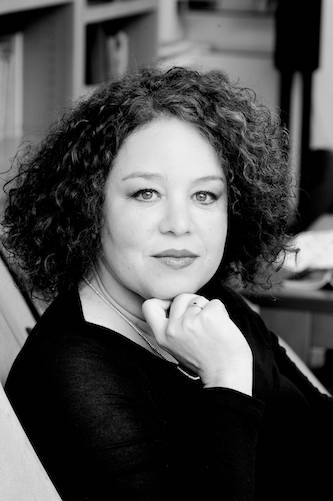
Author Maya Arad. Photo: Mira Mamon
The second novella, “A Visit (Scenes),” is a combination of a play and a story as it shifts in point of view. Here Arad breaks new ground as she tells the story of Miriam, an older Israeli widow, who has come for a three-week visit to her only child Yoram, who has worked in Silicon Valley for many years. He has finally married quite late to a woman named Maya, who has given him a son named Yonatan. Yoram and Maya have been to Israel, but this is Miriam’s first visit to America because she so badly wanted to see this new grandchild. With short takes — sometimes only a page or two — we get a full picture of what all three characters feel during this encounter. The reunion has been eagerly anticipated by Miriam but is painful for Maya and Yoram, whose finances and marriage are not what Miriam has been led to believe. We also get their back stories.
Proof of Arad’s talent is her compassion toward this sad family, whose inability to connect is so visceral and painful. Reading “A Visit” I was reminded of the early immigrant stories of Jhumpa Lahiri, how the disconnect between generations can be so profound, how ideas about child-raising can be so different, and how universal these stories are. Especially between Miriam and her son. However, there were times when I found the characterization of Maya unconvincing; at too many points she came off as a caricature of a Yuppie American who married a handsome older man too hastily. I wanted someone less mean, more rounded. Still, the pervasive urgency of the prose in this piece is well worth mentioning. By ignoring rules about point of view, Arad has given us a wonderfully full picture of the conflicts among these three people in fresh and interesting ways.
The last novella, “Make New Friends,” was the least successful for me. It centers on Efrat, an accomplished Israeli woman who has been living in the States for many years with her husband Benny and two children. Despite her PhD and her excellent job and her understanding mate, she gives new meaning to the term Helicopter Parent. Perhaps I am too old to appreciate the ins and outs of this story, but I did bring up three children and remember their sometimes challenging adolescent years well. For me, Efrat’s involvement with her daughter Libby’s life was, quite simply, unbelievable. However, by the end, when I realized that Efrat was as unhappy in some ways as her daughter — which was why she was so involved in her child’s life — I realized that even in what seemed at first to be a silly excursion into parenting resonated with some important truths.
Roberta Silman is the author of five novels, a short story collection, and two children’s books. Her latest, Summer Lightning, has been released as a paperback, an ebook, and an audio book. Secrets and Shadows ( Arts Fuse review ) is in its second printing and is available on Amazon. It was chosen as one of the best Indie Books of 2018 by Kirkus and it is now available as an audio book from Alison Larkin Presents. A recipient of Fellowships from the Guggenheim Foundation and the National Endowment for the Arts, she has reviewed for the New York Times and Boston Globe , and writes regularly for the Arts Fuse . More about her can be found at robertasilman.com , and she can also be reached at [email protected] .
Leave a Comment Cancel Reply
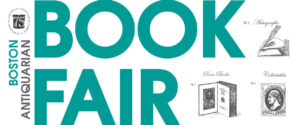
Recent Posts
Weekly feature: poetry at the arts fuse, visual arts review: “nurture: empathy for the earth” — imagining healing the planet, classical concert commentary: the boston symphony orchestra takes on the contemporary, theater review: “casey at the bat: an all-american panto” — a winning nine innings, film review: “anora” — a rollicking fractured fairy tale.

Sunday, December 15, 2019
Book review: hebrew roots, jewish routes.

No comments:
Post a Comment
Advertisement
Supported by
Israel’s Identity Crisis
- Share full article
By Adam LeBor
- June 29, 2008
What would Theodor Herzl, the father of modern political Zionism, make of today’s Israel? He would find not one Jewish state but a multiplicity, Bernard Avishai suggests. First, Israel the international actor, a member of the United Nations, signatory to peace treaties with Egypt and Jordan. Then the Zionist state-within-a-state. It predates Israel’s independence in 1948, but lives on in the Jewish Agency, which deals with Jewish immigration, and in the Jewish National Fund, which owns substantial amounts of land in the name of the Jewish people.
Avishai also mentions the Haredi communities, an Orthodox quasi state with its publicly financed education system and network of yeshivot adult religious seminaries. Finally, there is the settler state of hardliners who appropriate Palestinian land across the 1967 border and build, with government funds and support, their separate networks of roads, water and electricity supplies.
Can Israel be both a Jewish state and a democracy? At first glance the answer is yes. Governments are chosen by universal franchise, including perhaps one and a quarter million Israeli Arabs, who have their own non- or anti-Zionist political parties. Israel has an independent judiciary, an aggressive free press and a robust civil society. But non-Jews do not enjoy equal civil rights, mainly because of the Zionist, Haredi and settler states-within-a-state. As Avishai writes, “the institutions designed to advance the heroic Zionist state have become unworkable for the democratic one.”
It is almost impossible for non-Jews to buy land owned by the state or the Jewish National Fund. There is no secular marriage in Israel. Orthodox rabbis control the process of conversion, deciding who is a Jew and thus, often, who is a citizen. Mixed couples cannot be buried together in a state-funded Jewish cemetery. Even more absurd, Israel is probably the only country in the world that does not recognize its own nationality. Israelis cannot be inscribed as Israelis in the state population register, but must be recorded according to their religious or ethnic origin. Every request by Israelis Jewish and Arab to be listed simply as Israeli has so far been rejected. The government argues that this would undermine the principle of Israel as a Jewish state.
Meanwhile, “unrecognized” Arab villages languish for decades without municipal services, while governments of both left and right have spent $15 billion on settlements beyond the 1967 border. Here are the makings of a social explosion waiting to happen, Avishai says. Exclusion breeds an equal reaction. Arab citizens of Israel are using its freedoms, not to become more Israeli, but to articulate a growing Arab national consciousness. Recently, the Adalah advocacy center proposed a new draft constitution for Israel. It would abolish the law of return, which awards immediate citizenship to Jewish immigrants; it would require coequal and separate education systems and new, inclusive, national symbols.
The answer, Avishai says, in this brilliantly argued book, is not to tinker with symbols but to develop a national consciousness and identity based not on religion, but simply on being Israeli to remove all privileges accorded to Jews and make Israel a modern, egalitarian democracy. If all Israeli citizens were simply Israelis, rather than Jews, Muslims or Christians, there would be no “demographic threat” to the state’s continuation. At the same time, this new Israel would demand a civic loyalty from its Arab population, who, if they did not serve in the army, would at least perform some kind of national service. This new identity would be predicated not on religion, but on a shared Hebrew language; culture, economic and business ties; and simply living on the same strip of land.
To some extent this is already happening. Sayed Kashua is a talented Israeli-Arab journalist and novelist who writes in Hebrew. On the one hand, Kashua says, Hebrew is “the language of the enemy, the conqueror.” But at the same time, “there are things I can write about in Hebrew that I cannot write about in Arabic. ... I need Hebrew to write about freedom.”
In his enthusiasm for an Israeliness that is not predicated on being Jewish, Avishai perhaps underestimates the importance of ethnic identities, especially in an active war zone. When a Qassam rocket kills civilians in Sderot, Gazans applaud and hand out sweets celebrating the deaths of Jews. Even in the European Union, with its open borders and free trade, simmering disputes still sour relations between, for example, Germany and Poland, or Hungary and Slovakia. But Avishai, a former professor of business and public policy at Duke University, firmly believes in the potential role of business as a catalyst for peace.
In the endless discussions about the Israeli-Palestinian conflict, trade is rarely mentioned. Avishai argues that a new elite of globalized businessmen and -women is helping to remake the Israeli economy. He notes, correctly, that “Israeli elites cannot hope to have an economy like Singapore’s and a nationalities war like Serbia’s.” After a peace settlement, he hopes, Israel’s knowledge economy and high-tech start-ups would flourish across the Middle East, with Palestinian entrepreneurs as go-betweens. It’s an engaging, optimistic vision. Perhaps too optimistic but a century ago Herzl was also dismissed as a fantasist. In this wise, humane and important book, Avishai is taking on the role of a Herzl for the modern age.
THE HEBREW REPUBLIC
How secular democracy and global enterprise will bring israel peace at last..
By Bernard Avishai.
290 pp. Harcourt. $26.
Adam LeBor is the author of “City of Oranges: An Intimate History of Arabs and Jews in Jaffa.”
Explore More in Books
Want to know about the best books to read and the latest news start here..
100 Best Books of the 21st Century: As voted on by 503 novelists, nonfiction writers, poets, critics and other book lovers — with a little help from the staff of The New York Times Book Review.
Aleksei Navalny’s Prison Diaries: In the Russian opposition leader’s posthumous memoir, compiled with help from his widow, Yulia Navalnaya, Navalny faced the fact that Vladimir Putin might succeed in silencing him .
Jeff VanderMeer’s Strangest Novel Yet: In an interview with The Times , the author — known for his blockbuster Southern Reach series — talked about his eerie new installment, “Absolution.”
Discovering a New Bram Stoker Story: The work by the author of “Dracula,” previously unknown to scholars, was found by a fan who was trawling through the archives at the National Library of Ireland.
The Book Review Podcast: Each week, top authors and critics talk about the latest news in the literary world. Listen here .

COMMENTS
Known best for his New York Times bestseller, A Woman in Jerusalem, Yehoshua's gripping story is an absolute must-read! Exploring themes of love, humanity, and individuality, Yehoshua will not only help you strengthen your Hebrew, but also your outlook on life. His work continually revolves around human nature and coping with hardships.
'The Hebrew Teacher': Three novellas about Israeli women in the US - review Each story is a slice of life of an Israeli woman whose reality was altered by immigration to the United States.
New York Review Books, 269 pp., $17.95 (paper) The epigraph to the second part of Anton Shammas's novel Arabesques, first published in Hebrew in 1986, reads: Dresses of beautiful women, in blue and white. And everything in three languages: Hebrew, Arabic and Death. These lines are from a poem by Yehuda Amichai, Israel's unofficial poet ...
It also gained good reviews from the pages of the New York Review of Books. Below are some of the most recommended books from Hebrew literature: A Tale of Love and Darkness by Amos Oz and translated by Nicholas de Lange. The book was first published in Hebrew back in 2002. It was translated into 28 languages and sold million copies worldwide.
Best Hebrew grammar books for beginners. 1. Modern Hebrew: An Essential Grammar. Produced by Prof. Lewis Glinert, a reputable scholar of Hebrew linguistics at Dartmouth College, Modern Hebrew: An Essential Grammar is specifically made for beginning students of Hebrew whose first language is English.
Book Review | Reading in Hebrew About Love in the Time of the Nakba. Prominent Lebanese writer Elias Khoury's literary prowess is on display in the Hebrew version of 'As Though She Were Sleeping,' about the relationship between a Palestinian man from Jaffa and a girl from Beirut in 1947.
As we watch, appalled, by the rise of antisemitism and the crisis facing Israel, these stories ask big questions about the future of Israel and of Jews in the English-speaking world. The Hebrew ...
The complete review's Review: . Israeli-born Maya Arad has lived in the United States for some two decades while continuing to write fiction in Hebrew, and the three novellas collected in The Hebrew Teacher all explore aspects of the Jewish-Israeli expatriate experience in the US. The title-novella is narrated by Ilana -- born, like the state of Israel, in 1948, but having come to the US in 1971.
The Hebrew Teacher: Three Novels By Maya Arad. Translated by Jessica Cohen (New Vessel Press). Devotees of Israeli literature may already be familiar with Maya Arad, considered one of the foremost Hebrew writers living today, and her most recently translated book, a compilation of three novellas—in order, the titular "The Hebrew Teacher," "A Visit (Scenes)" and "Make New Friends ...
Find the latest book reviews, reading lists, and editors' books, and search JBC's database of over 8, 000 titles. Book Search; Reading Lists; Israel Bookshelf; ... So while it's a little surprising that The Hebrew Teacher is the first to be translated into English, it surely won't be the last. Composed of three ...
Softcover $17.95 (320pp) 978-1-954404-23-6. Cultures and generations clash in Maya Arad's insightful novella collection The Hebrew Teacher, which follows three storylines whose flows are sometimes concentric. Ilana is a Hebrew professor. She's been at her school for "forty years and no one has ever interfered in her teaching.
Sapiens: A Brief History of Humankind (Hebrew: קיצור תולדות האנושות, Qitzur Toldot ha-Enoshut) is a book by Yuval Noah Harari, first published in Hebrew in Israel in 2011 based on a series of lectures Harari taught at The Hebrew University of Jerusalem, and in English in 2014. [1] [2] The book, focusing on Homo sapiens, surveys the history of humankind, starting from the ...
Amazing articles by Michael Walzer, Gary Saul Morson, Cecile E. Kuznitz, and many more. Michael Walzer. Allan Arkush. Julia Kornberg. Gary Saul Morson. Shai Secunda. Roslyn Weiss. Jack Omer-Jackaman. Michael Avi Helfand.
Scroll down to discover the 9 best Hebrew textbooks and how they can help you learn the language. Best Overall Hebrew Book. The Routledge Introductory Course in Modern Hebrew. Best for Beginners. Hebrew for Beginners. Best for Learning the Alphabet. Hebrew Workbook for Beginners. Best for Learning Hebrew Quickly.
Book Reviews; Books (1) Journal Articles (14) Magazine Articles (15) Miscellaneous; Newspaper Articles (8) Theses (1) Web Articles; Doctor Faustus and Machiavelli (Book Review) (In Hebrew) Citation: Avihu Zakai. 11/3/2019. "Doctor Faustus ...
In a fascinating new book, The Story of Hebrew (Princeton University Press 978-0691153292), Dr. Lewis Glinert, professor of Hebrew Studies at Dartmouth College, provides a history of the Hebrew ...
My name is Inbal Amit, and I help English Speakers Learn and Love Hebrew. I also enjoy sharing my Jewish Culture with anyone interested in learning about it. Combining practical and innovative methods including the English you know, my students of all ages enjoy great wins, clarity, and confidence in their journey to Hebrew fluency.
The Hebrew Teacher by Maya Arad. Translated by Jessica Cohen. New Vessel Press, 386 pages, $17.95. Maya Arad is an accomplished Israeli writer, born there in 1971, brought up on a kibbutz, and educated at Tel Aviv University. For her doctorate in linguistics she went to University College London and since then she has lived outside of Israel.
Well, thankfully, I don't have to ponder that question any more. I recently received the book Hebrew Roots, Jewish Routes by Dr. Jeremy Benstein. This book does the two things that any book on Hebrew that I'd want to write would need to do: discuss the significance of Hebrew (both throughout history and in today's society), and present many ...
100 Best Books of the 21st Century: As voted on by 503 novelists, nonfiction writers, poets, critics and other book lovers — with a little help from the staff of The New York Times Book Review.
This is a community for Hebrew learning and immersing in the Jewish culture through language, tradition, and knowledge. Providing lessons and preview from my Online Courses, Hebrew Workbooks, Notebooks, and Coloring books, all unique and featuring exclusive benefits. Thank you for joining. Toda! (Thank-You) Follow us on YouTube, Instagram ...